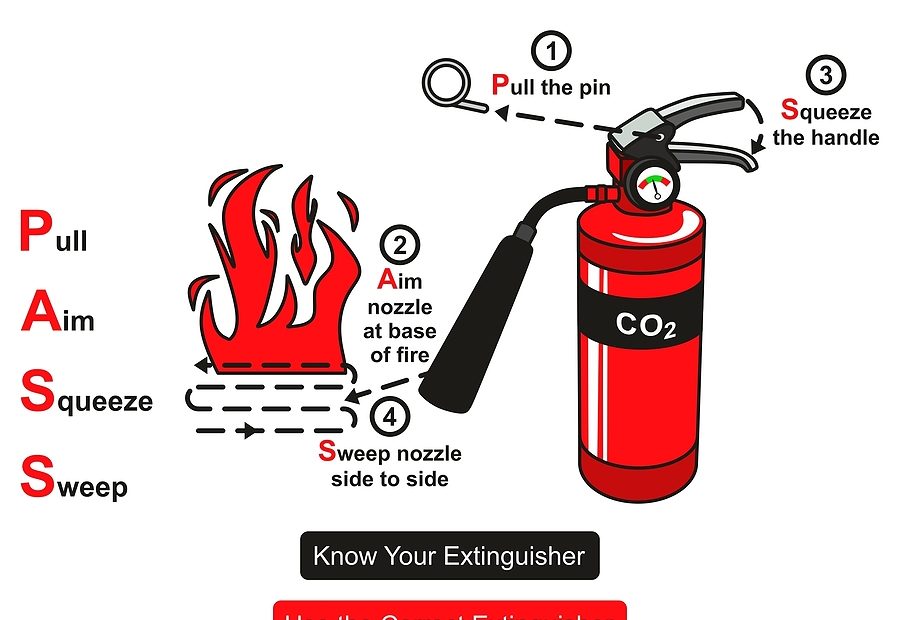The most frequent incident that small businesses must prepare for, according to OSHA, is a fire. Fire extinguishers can be quite valuable in the workplace for putting out small flames or protecting escape routes in the event of a major fire. In New Mexico workplaces, it is critical that employees know how use a fire extinguisher correctly in the event of a small fire.
OSHA mandates that employers train employees on how to use an extinguisher properly and how to effectively analyze a situation and decide when evacuation is the safest option. According to OSHA, employees must be educated in the use of fire extinguishers at least once a year.
The PASS method is a simple fire extinguisher training technique that can be used with employees. PASS is an acronym that stands for:
- Pull the fire extinguishers pin
- Aim the hose downward toward the fire’s base
- Squeeze the extinguisher’s handle to release the extinguishing agent
- Sweep the extinguisher’s nozzle side-to-side at the flame’s base until the flame is extinguished
The training does not end with knowing how to use the extinguisher. Employees who respond to a fire should also be instructed to follow the following protocol:
- If necessary, activate the fire alarm or contact the fire department right away.
- Before nearing the fire, plan an escape path that is free of flames, extreme heat, and smoke. Allowing this evacuation route to become closed is not a good idea.
- If the fire flares up again, use the PASS technique to discharge an extinguisher and back away from the area.
- Evacuate promptly if the fire extinguisher is empty and the fire is still burning.
- Evacuate quickly if the fire gets out of hand.
Fire extinguishers are only designed to put out small fires. Employees should know when and how to leave if a fire develops too rapidly or the environment becomes too dangerous. If any of the following conditions exist, personnel should immediately follow evacuation protocols and not use an extinguisher to put out the fire:
The fire is out of control
The fire involves volatile solvents, is partially obscured behind a wall or ceiling, is impossible to reach from a vertical position, or is more than 60 square feet.
It is dangerous to breathe the air
Without some type of respiratory protection, it is hard to put out the fire due to the high levels of smoke.
The atmosphere is either too hot or too smoky
Radiated heat is easily felt, making it difficult to go close enough to a fire to use the extinguisher (about 10-15 feet). To avoid heat or smoke, you must crawl on the floor. There is a lack of visibility.
The evacuation routes are obstructed
The fire is out of control, and heat, smoke, and flames are obstructing possible escape routes.
Final thoughts on using a fire extinguisher correctly
While fire extinguishers are a fantastic tool to put out small fires, they should not be used in areas where you cannot get out quickly and safely. Ensure your employees know how to use them and when it is best to leave immediately if no other option is available. Always place the safety of your employees and customers first. Remember, you can avoid these incidents by equipping your employees with the appropriate knowledge.
